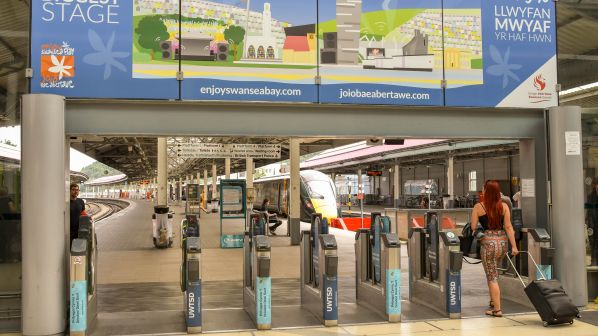THE Welsh government and Transport for Wales (TfW) have launched a 12-week public consultation process into the proposed South West Wales Metro project, which presents options for improving rail services within the South West Wales region.
These include increased frequency of long-distance strategic services, increased local services from West Wales to Carmarthen and Swansea, new stations and improvements to existing stations, and the development of a Swansea Bay and West Wales Metro network.
The project is being developed in partnership with Carmarthenshire, Neath Port Talbot, Pembrokeshire and Swansea councils.
Investigations into the improvements required identified a number of key issues, including:
- a lack of competitive or short journey times to South West Wales compared with using a car
- a lack of through services to South West Wales
- low frequency of direct trains to Swansea
- low service frequency on West Wales branches (two-hourly), and
- a lack of local commuter services to serve the Swansea Bay area, in particular on the Swansea District Line.
Proposed improvements include reducing rail journey times between West Wales and London on the South Wales Main Line (SWML), with a goal of providing a journey time of 1h 30min between Cardiff and London Paddington, 30 minutes between Cardiff and Bristol Temple Meads and 30 minutes between Swansea and Cardiff.
The plans also call for an increase in train frequencies between South West Wales and London, Cardiff and Bristol Temple Meads, and Swansea - Cardiff.
Other improvements for the SWML include:
- providing sufficient capacity and improving network resilience between Cardiff and Bristol to accommodate future passenger and freight demand
- enhancing rail connectivity to international gateways, airports and enterprise zones
- improving Park and Ride provision for accessing the SWML and reducing reliance on the M4 corridor
- improving integration between mainline rail and the wider transport network, especially the developing South Wales and Bristol metro systems, and
- maximising the potential for stations to accelerate urban regeneration and major development site delivery.
The Swansea Bay and West Wales Metro network aims to reduce journey times between key population centres including Swansea, Neath, Port Talbot, Llanelli, Carmarthen, Haverfordwest and Milford Haven.
The metro project would also increase service frequencies, including for local stations on the main line between Carmarthen and Port Talbot, especially during peak periods; on the Heart of Wales Line to serve commuters into Swansea and beyond; and across South West Wales, in order to improve suitability for daily commuting.
Other goals of the project include:
- improving regional transport accessibility through widening the spatial reach of the rail network and services
- improving Park and Ride provision for access to the Swansea Bay region
- providing a viable public transport alternative to the congested M4 and A48 road corridor
- contributing to the development of a Swansea Bay Urban Area Metro including improvements to multi-modal interchanges
- maximising the potential for stations to accelerate urban regeneration and major development site delivery
Both the mainline and metro improvements aim to:
- increase the number of trips made by public transport, focusing particularly on commuter trips
- reduce the environmental impact of transport, especially carbon emission and air quality, and
- improve rail network efficiency to allow a lower future subsidy requirement per passenger.
“These proposals look to the future, our recovery from Covid and the development of a high-quality, integrated transport system fit for purpose,” says minister for economy, transport and North Wales, Mr Ken Skates. “They are all about making it easier to travel, whether by train, bus, bike or on foot. It’s about making it easier to get to work or school, to your hospital appointment or to get out and about in the evenings and weekends using public transport.”

